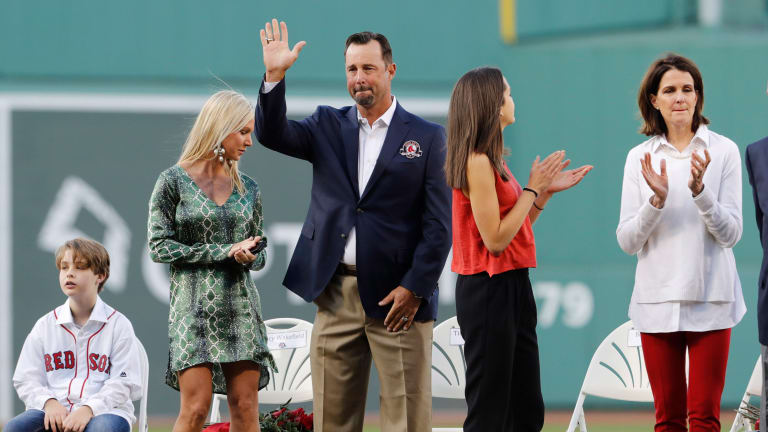
Friday Focus: Tim Wakefield 'Tried Everything He Could to Make It" as a Pittsburgh Pirate

In I992, the Pittsburgh Pirates were in the heat of battle for the National League East Pennant. There were no wild card slots, nothing to fall back on if you didn’t get it done in the regular season. The cash strapped club was already likely to lose superstar Barry Bonds after the season to free agency and it was becoming clear they didn’t have enough pitching to reach the promised land. Then came something different, someone different - a knuckleballer named Tim Wakefield. Wakefield was a former second baseman who was informed by a scout that he didn’t have the skillset to move past AA ball. When asked why he wanted to try to become a pitcher, he said “I just wanted to say I tried everything I could to make it.” It was an attitude like that which provided for a lengthy career and abundant success in the majors.
During this era of baseball Charlie Hough was probably the most well-known knuckleballer around. As with anyone who practiced the art, he was inconsistent, and you could just as easily see him blow up in the first inning as witness a nine-inning masterpiece. For real success you’d have to look back to Phil Niekro or Ted Lyons, so to say Tim arrived in the majors to fan-fare would be an overstatement.
The Pirates needed something though and the youngster has flummoxed hitters after he fully converted to pitching in 1990, culminating in a stunning start for the AAA Buffalo Bisons in 1992. Wakefield put together ten wins, six of which were complete games, with a 3.06 ERA all before July 31. The Bucs had seen enough and after called him up to the majors.
Tim walked in and picked up right where he left off pitching a complete game in his first contest against the St. Louis Cardinals, striking out ten and tossing 146 pitches. Yes, pitch counts weren’t really a thing back then but 146 was still rather unheard of for pitchers. If you saw Wakefield pitch though he simply looked like he was casually playing catch with an 8-year-old. Just flicked the ball toward the plate. Poor Don Slaught looked like he didn’t have a clue where the ball was going half the time, and the batters certainly didn’t.
As the Pirates pushed for the playoffs, Wakefield gave them exactly what they needed, a compliment to Doug Drabek and consistency. He started 13 games leading to a stellar 8-1 record and a 2.15 ERA. He showed up on "This Week in Baseball" (We didn’t always have the internet ok kids) teaching us his grip for his knuckleball. Even Bob Walk a fellow member of the rotation spent an afternoon trying to figure out how to throw the tantalizing pitch, even if it was all in fun. He was on top of the world, and a national story, even winning Rookie Pitcher of the Year honors from The Sporting News.
Next came the NLCS against the Atlanta Braves. Tim Started two games, both against a future Hall of Famer Tom Glavine. Wakefield bested Glavine in both contests, the first being a complete game five hitter. There was a solid chance he would have been named NLCS MVP if Stan Belinda hadn’t coughed up three runs in the ninth to break the hearts of the entire city, but that’s a story for another day.
In 1993, Wakefield was counted as one of the best young pitchers in the game and an anchor in the Pirates rotation. They had lost many players but still had a competitive core that needed every bet to play out. It didn’t. Tim simply blew up, walks were completely out of hand, he walked nine batters in a game on two separate occasions and ten in another. The Pirates were forced to send him down after losing his starting spot in the rotation.
Many people remember Tim for what he did after being released by the Pirates - contributing mightily to Boston Red Sox glory and rightly so. The Sox picked him up and immediately paired him with the aforementioned Phil Niekro who coached him to more effectively use his Knuckleball as an out pitch.
He would go on to finish a 19 year career with the Red Sox winning 200 games and appearing on the Hall of Fame ballot in 2017.
But for one summer Tim Wakefield was exactly what the Pirates needed, he was our star, our future and without him there might not have been a 1992 NLCS to have our hearts broken. He will always remain in Pirates lore both for what he provided down the stretch in 1992 and the mountain of what could have been here in Pittsburgh.